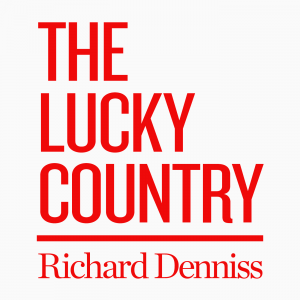June 2018
Tax cuts by electorate
Read the full report: 2018 tax cuts by electorate. Table of electorates Rank Electorate Percentage of average Party 1 Wentworth 192% LIB 2 North Sydney 180% LIB 3 Warringah 172% LIB 4 Sydney 167% ALP 5 Melbourne Ports 160% ALP 6 Higgins 159% LIB 7 Bradfield 158% LIB 8 Kooyong 156% LIB 9 Grayndler 154% ALP
New Analysis: 95% of Stage 3 Tax Cuts go to high income earners
New Australia Institute analysis of stage three of the government’s income tax plan show high-income earners will get 95% of the benefit, while three-quarters of taxpayers get no benefit at all. Today the Senate has rejected stage 3 of the government’s income tax plan, which removes the 37 per cent tax bracket completely, resulting in
Dead Right – How Neoliberalism Ate Itself And What Comes Next
Why, after 27 years of economic growth and a mining boom, how can Australia be too broke to afford high quality rape crisis services, or to increase Newstart above the poverty line? Today you’ll hear the Australia Institute’s Chief Economist Richard Denniss at the official launch of his June Quarterly Essay – Dead Right: how
The Dimensions of Insecure Work in Australia
Less than half of employed Australians now hold a “standard” job: that is, a permanent full-time paid job with leave entitlements. That’s the startling finding of a new report on the growing insecurity of work published by the Centre for Future Work.
Case for top-end tax cuts not supported by data
New Australia Institute analysis of the long term impacts of bracket creep shows that taxpayers are being over compensated for bracket creep at all income levels. The government has used bracket creep as a key reason why it needs to implement its top-end income tax cuts as outlined in the 2018 Budget. “There is no compelling case for an income tax cut to reduce
Inequality in Australia going from bad to worse
On Monday 18 June, The Australia Institute, Australia21 and the former Treasurer, the Hon Wayne Swan MP, are jointly hosting a roundtable discussion in Parliament House on dealing with economic inequality in Australia. A new report from The Australia Institute, released as part of the Inequality Roundtable, shows inequality is getting worse in Australia with
QLD loses out in tax cut windfall
New analysis from the Australia Institute shows that Queenslanders would receive below average benefits compared to the average Australian household from income tax cuts, outlined in the 2018 federal budget. The figures represent the change in household disposable income (after tax income) as a percentage of change in the national average. Modelling also took into
Tax cut windfall: Regional VIC loses out
New analysis from the Australia Institute shows regional Victoria would receive below average benefits compared to the average Australian household from income tax cuts, outlined in the 2018 federal budget. The figures represent the change in household disposable income (after tax income) as a percentage of change in the national average. Modelling also took into
WA tax cut windfall
The Australia Institute has analysed the average electorate household benefit* from the income tax cuts announced in the 2018 Budget, as a proportion of the National Average benefit. The figures represent the change in household disposable income (after tax income) as a percentage of change in the national average. “It’s very visible in a state
Tax cut windfall: Regional NSW loses out
New analysis from the Australia Institute shows that regional NSW would receive below average benefits compared to the average Australian household from income tax cuts, outlined in the 2018 federal budget. The figures represent the change in household disposable income (after tax income) as a percentage of change in the national average. Modelling also took
Braddon loses out on tax cut windfall
A new report from the Australia Institute shows that Tasmanian families living in the federal electorate of Braddon benefit less than most other Australian electorates from the income tax cuts outlined in the 2018 federal budget. The figures represent the change in household disposable income (after tax income) as a percentage of change in the
SA loses out on tax cut windfall
New analysis from the Australia Institute shows that South Australians are amongst those to benefit least from income tax cuts outlined in the 2018 federal budget, compared to the average Australian household. The figures represent the change in household disposable income (after tax income) as a percentage of change in the national average. Modelling also
Mayo poll shows income and company tax cuts unpopular
The Australia Institute commissioned ReachTEL to conduct a survey of 1031 residents across the federal electorate of Mayo on the evening of 5 June 2018. Key results: 2-Party Preferred: Centre Alliance 58% Liberal 42% Two thirds (65%) of respondents think the Senate should oppose the top end income tax cuts When given a list of
Neo-liberalism is dead and the Australian political right killed it
By Richard Denniss, Chief Economist at The Australia Institute [This article orininally appeared in the AFR] If Malcolm Turnbull were serious about the cutting the company tax rate he would simply push for a carbon tax to fund it. If the Greens didn’t support him, Labor almost certainly would. In one fell swoop he’d deliver the tax
Wentworth biggest winner from income tax cuts, Nationals seats benefit least
The Australia Institute has analysed the average electorate household benefit* from the income tax cuts announced in the 2018 Budget, as a proportion of the National Average benefit. The figures represent the change in household disposable income (after tax income) as a percentage of change in the national average. “This tax cut is highly selective.
Insecure work: The New Normal
Most Australians know in their guts that it’s pretty hard to find a traditional permanent job these days. And now the statistics confirm it: less than half of employed Australians have one of those “standard” jobs. And more than half experience one or more dimensions of insecurity: including part-time, irregular, casual, contractor, and marginally self-employed jobs.
May 2018
Tax and the meaningless law of averages
Based on the way they talk about the proposed income tax cuts, the average Turnbull government MP struggles with the definition of average. To be fair, averages can be a bit confusing. For example, the average Australian has less than two legs (as the number of people with one leg far exceeds the number of people
For First Time, Less than Half of Workers Have a ‘Standard Job’
For the first time on record, less than half of employed Australians hold a ‘standard job’: that is, a permanent full-time paid job with leave entitlements.
A Comprehensive and Realistic Strategy for More and Better Jobs
The Australian Council of Trade Unions has released a major policy paper outlining an ambitious, multi-faceted program to address the chronic shortage of work, and the steady erosion of job quality, in Australia. The full paper, Jobs You Can Count On, is available on the ACTU’s website. It contains specific proposals to stimulate much stronger job-creation, reduce unemployment and underemployment, improve job quality (including through repairs to Australia’s industrial relations system), and ensure that all communities (including traditionally marginalised populations like indigenous peoples, women, youth, and people with disability) have full access to the decent work opportunities that the plan would generate.
Government Spending Power Could Support Stronger Wage Growth
Australia’s state and federal governments could help solve the problem of stagnant wages by better leveraging their own spending power.
2018 Budget Wrap
“the vast majority of the money being handed out is going to go to high income earners…” The Australia Institute was in the 2018 Budget Lockup, and subsequently have gone through the budget papers. Listen to two top economists break it down and give you the straight facts in a way that you won’t hear
Federal budget 2018: Good bracket creep v bad bracket creep
Bracket creep is as maligned as it is misunderstood. Indeed, it can even be a good thing. But while most people probably know that bracket creep refers to people getting tipped into higher marginal tax rates as their wages rise, few seem to realise that there is good bracket creep and bad bracket creep. But before I explain
62% of tax cuts benefits go to highest income earners
Budget proposes Australia’s progressive tax system be overhauled to put majority of workers on the same tax rate. [Report – see PDF below] The Australia Institute has issued a briefing paper which modelled the distributionary effects of the proposal, showing the benefits flow overwhelmingly to the highest income earners who get 62%, while just 7%
Evidence backing Scott Morrison plan to expand Pension Loan Scheme
Reported moves to expanded the under-utilised Pension Loan Scheme (PLS) to allow pensioners access to the scheme would be a welcome budget breakthrough. “This is sensible economic reform which will allow those on the aged pension to effectively access some of the value of their home without having to sell it,” said Ben Oquist, Australia
Pocket Money: 14 Reasons Why The Case For A Company Tax Cut Has Collapsed
In a special “Pocket Money” episode of Follow the Money, released on the eve of the Budget, we discuss the 14 reasons why the case for the company tax cuts collapsed. See below for all the ways you can find our Budget analysis. Our original episode discussing the company tax cuts can be found here.
Budget 2018: 23.9 per cent is not the magic answer to the general level of taxes
The answer to the meaning of life is, as we know thanks to Hitchhiker’s Guide to the Galaxy, “42”. What is less well known is that the answer to what Australia’s tax policy should be is also a single, specific and essentially arbitrary numerical figure. [This article was first published in the Australian Financial Review –
General Enquiries
Emily Bird Office Manager
mail@australiainstitute.org.au
Media Enquiries
Glenn Connley Senior Media Advisor
glenn.connley@australiainstitute.org.au

